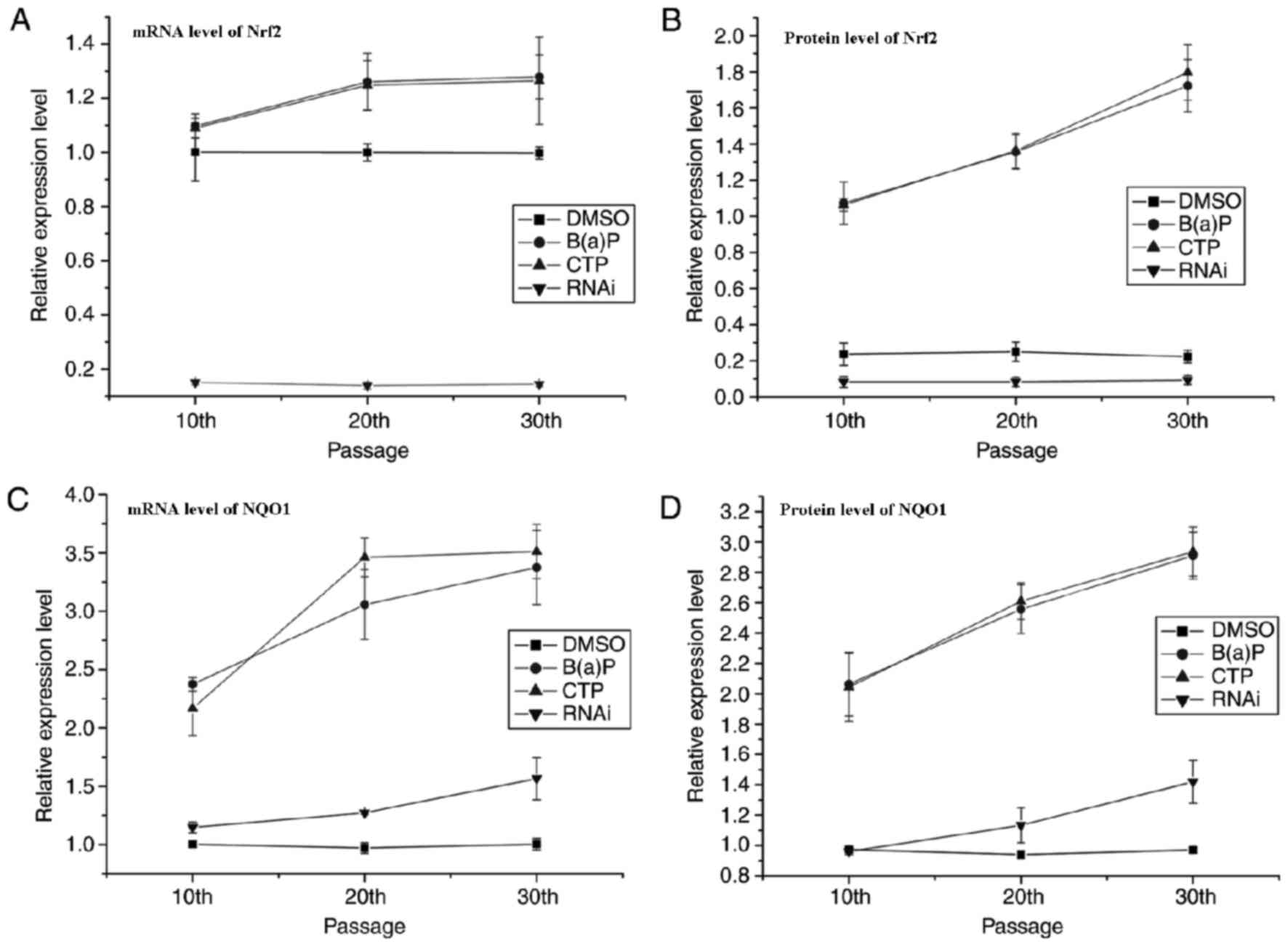|
1
|
Gibbs GW and Labrèche F: Cancer risks in
aluminum reduction plant workers: A review. J Occup Environ Med. 56
5 Suppl:S40–S59. 2014. View Article : Google Scholar
|
|
2
|
Kim SY, Lee J, Kim BH, Kim YJ, Yang KS and
Park MS: Facile synthesis of carbon-coated silicon/graphite
spherical composites for high-performance lithium-ion batteries.
ACS Appl Mater Interfaces. 8:12109–12117. 2016. View Article : Google Scholar
|
|
3
|
Yamaoka M, Asami SS, Funaki N, Kimura S,
Yingjie L, Fukuda T and Yamashita M: Preparation of organic
light-emitting diode using coal tar pitch, a low-cost material, for
printable devices. PLoS One. 8:e629032013. View Article : Google Scholar
|
|
4
|
Koganti A, Singh R, Rozett K, Modi N,
Goldstein LS, Roy TA, Zhang FJ, Harvey RG and Weyand EH:
7H-benzo[c]fluorene: A major DNA adduct-forming component of coal
tar. Carcinogenesis. 21:1601–1609. 2000. View Article : Google Scholar
|
|
5
|
Lavoué J, Gérin M, Côté J and Lapointe R:
Mortality and cancer experience of Quebec aluminum reduction plant
workers. Part I: The reduction plants and coal tar pitch volatile
(CTPV) exposure assessment. J Occup Environ Med. 49:997–1008. 2007.
View Article : Google Scholar
|
|
6
|
Spinelli JJ, Demers PA, Le ND, Friesen MD,
Lorenzi MF, Fang R and Gallagher RP: Cancer risk in aluminum
reduction plant workers (Canada). Cancer Causes Control.
17:939–948. 2006. View Article : Google Scholar
|
|
7
|
Bolliet C, Juery C and Thiebaut B: Impact
of oxidation process on polycyclic aromatic hydrocarbon (PAH)
content in bitumen. J Occup Environ Hyg. 10:435–445. 2013.
View Article : Google Scholar
|
|
8
|
Feng F, Wu Y, Zhang S, Liu Y, Qin L, Wu Y,
Yan Z and Wu W: Macrophages facilitate coal tar pitch
extract-induced tumorigenic transformation of human bronchial
epithelial cells mediated by NF-kB. PLoS One. 7:e516902012.
View Article : Google Scholar
|
|
9
|
Valko M, Leibfritz D, Moncol J, Cronin MT,
Mazur M and Telser J: Free radicals and antioxidants in normal
physiological functions and human disease. Int J Biochem Cell Biol.
39:44–84. 2007. View Article : Google Scholar
|
|
10
|
Pilger A and Rudiger HW:
8-Hydroxy-2′-deoxyguanosine as a marker of oxidative DNA damage
related to occupational and environmental exposures. Int Arch Occup
Environ Health. 80:1–15. 2006. View Article : Google Scholar
|
|
11
|
Taguchi K, Motohashi H and Yamamoto M:
Molecular mechanisms of the Keap1-Nrf2 pathway in stress response
and cancer evolution. Genes Cells. 16:123–140. 2011. View Article : Google Scholar
|
|
12
|
Biswas C, Shah N, Muthu M, La P, Fernando
AP, Sengupta S, Yang G and Dennery PA: Nuclear heme oxygenase-1
(HO-1) modulates subcellular distribution and activation of Nrf2,
impacting metabolic and anti-oxidant defenses. J Biol Chem.
289:26882–26894. 2014. View Article : Google Scholar
|
|
13
|
Ma Q: Role of nrf2 in oxidative stress and
toxicity. Annu Rev Pharmacol Toxicol. 53:401–426. 2013. View Article : Google Scholar
|
|
14
|
Li LR, Dong H, Song E, Xu X, Liu L and
Song Y: Nrf2/ARE pathway activation, HO-1 and NQ01 induction by
polychlorinated biphenyl quinone is associated with reactive oxygen
species and PI3K/AKT signaling. Chem Biol Interact. 209:56–67.
2014. View Article : Google Scholar
|
|
15
|
Anwar-Mohamed A, Elshenawy OH, Soshilov
AA, Denison MS, Chris Le X, Klotz LO and El-Kadi AO: Methylated
pentavalent arsenic metabolites are bifunctional inducers, as they
induce cytochrome P450 1A1 and NAD(P)H:quinone oxidoreductase
through AhR- and Nrf2-dependent mechanisms. Free Radic Biol Med.
67:171–187. 2014. View Article : Google Scholar
|
|
16
|
Nioi P and Hayes JD: Contribution of
NAD(P)H:quinone oxidoreductase 1 to protection against
carcinogenesis, and regulation of its gene by the Nrf2 basic-region
leucine zipper and the arylhydrocarbon receptor basic
helix-loop-helix transcription factors. Mutat Res. 555:149–171.
2004. View Article : Google Scholar
|
|
17
|
Oh ET and Park HJ: Implications of NQO1 in
cancer therapy. BMB Rep. 48:609–617. 2015. View Article : Google Scholar
|
|
18
|
National Center for Biotechnology
Information. https://www.ncbi.nlm.nih.govJanuary. 2018
|
|
19
|
Feed ingredients for laboratory animal,
National standard in China, GB 14924.3. 2010
|
|
20
|
Livak KJ and Schmittgen TD: Analysis of
relative gene expression data using real-time quantitative PCR and
the 2(T)(-Delta Delta C) method. Methods. 25:402–408. 2001.
View Article : Google Scholar
|
|
21
|
Yu R, Chen C, Mo YY, Hebbar V, Owuor ED,
Tan TH and Kong AN: Activation of mitogen-activated protein kinase
pathways induces antioxidant response element-mediated gene
expression via a Nrf2-dependent mechanism. J Biol Chem.
275:39907–39913. 2000. View Article : Google Scholar
|
|
22
|
Feng FF, Qin LJ, Wu YJ, Li YQ and Wu YM:
GC-MS analysis of coal tar pitch fume exract. Ind Health Occup Dis.
37:198–203. 2011.(In Chinese).
|
|
23
|
Moorthy B, Chu C and Carlin DJ: Polycyclic
aromatic hydrocarbons: From metabolism to lung cancer. Toxicol Sci.
145:5–15. 2015. View Article : Google Scholar
|













